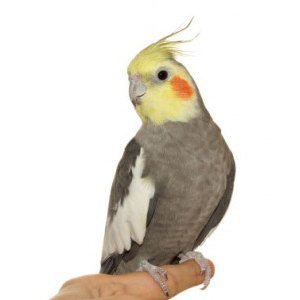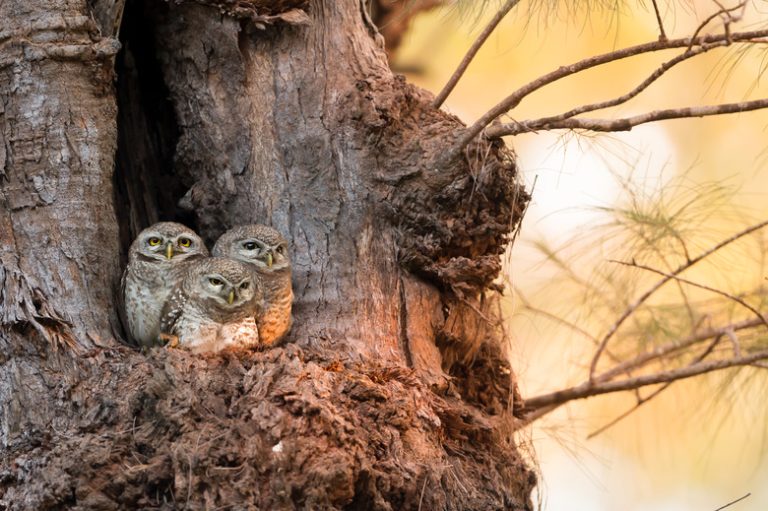Tracking the Whooping Crane Migration: Dates And Locations
🐦 Tracking the whooping crane migration will take place from march 19th to april 21st. The migration will span over two locations: texas and nebraska.
Every year, the whooping crane migration attracts nature enthusiasts from all over the world. The whooping crane is an endangered bird species, and tracking their migration is crucial to their survival. The 2025 migration will take place from March 19th to April 21st and will cover two key locations: Texas and Nebraska.
The journey of the whooping cranes is an incredible feat of endurance. The birds travel all the way from their breeding grounds in wood buffalo national park, canada, to their wintering grounds in aransas national wildlife refuge, texas. Scientists and birdwatchers alike eagerly await the arrival of the magnificent birds, who travel a round trip of over 4,000 miles.
Whooping Cranes And Their Migration Patterns
Whooping cranes are north america’s tallest bird and one of the world’s most endangered species. These elegant birds breed in canada’s boreal forests and migrate to their wintering grounds along the texas gulf coast. Understanding their migration patterns is essential to their conservation.
Let’s explore some of the key details.
Detailed Information On The Behavior Of The Whooping Cranes
Whooping cranes are one of the oldest bird species, and their migratory behavior is complex and fascinating. Here is some detailed information about their behavior:
- During the breeding season, whooping cranes are territorial birds and mate for a lifetime.
- They lay one or two eggs, but it’s rare for both chicks to survive.
- The chicks learn everything from their parents, including their migration route.
- Whooping cranes are social birds and often fly in pairs or family groups. However, during migration, they may form loose flocks.
Factors That Influence Their Migration
Like many other migratory birds, whooping cranes are impacted by both natural and human-made factors that influence their migration patterns. Here are some of the key factors:
- Weather: Whooping cranes can sense changes in weather conditions, and their migration timing may shift accordingly.
- Food availability: During migration, whooping cranes rely on rest stops with adequate food and water sources. Changes in land use can impact their food sources and, in turn, impact their migration.
- Anthropogenic threats: Whooping cranes face various human-made threats, including power lines, oil spills, and habitat loss. These threats can disrupt their migration and endanger their lives.
Understanding these factors can lead to better conservation strategies and help protect the survival of this endangered species.
Tracking the whooping crane migration is essential to their survival. There are several factors that influence their complex migratory behavior, and understanding them is crucial to ensure their conservation in the future.
Dates And Locations Of The Whooping Crane’S Migration
Tracking The Whooping Crane Migration: Dates And Locations
Whooping cranes are majestic birds that migrate every year from their breeding grounds in wood buffalo national park, canada, to their wintering grounds in the aransas national wildlife refuge, texas. This year, the migration of these incredible birds is set to begin in september and end in december.
In this blog post, we will provide you with a detailed overview of the planned migration, including the dates and key locations of their journey.
Overview Of The Planned Migration
The migration of the whooping cranes begins in september and lasts until december. During this time, these birds travel over 2,400 miles, crossing over the central united states, from canada to texas. The migration is divided into two main stages: the fall migration and the spring migration.
In the fall migration, the whooping cranes travel from canada to the southern united states, while in the spring migration, they head back to their breeding grounds in canada.
Detailed Information On The Migration Schedule
Here is a more detailed schedule of the whooping crane migration:
- September: The migration begins as the whooping cranes leave their breeding grounds in wood buffalo national park, canada.
- Late september/early october: The whooping cranes make their first stopover in saskatchewan, canada. Here, they rest and refuel before continuing their journey.
- Mid-october: The whooping cranes reach their second stopover in north dakota, where they spend some time resting and feeding before continuing south.
- November: The whooping cranes reach their wintering grounds in the aransas national wildlife refuge, texas. Here, they will spend the winter months resting and feeding before heading back to canada in the spring.
Key Locations Where The Whooping Cranes Stop During Their Migration
The whooping cranes make several stopovers during their migration, where they rest and refuel before continuing their journey. Here are some key locations where the whooping cranes stop during their migration:
- Wood buffalo national park, canada: This is where the whooping cranes breed and raise their young.
- Saskatchewan, canada: The first stopover during the migration, where the birds rest and refuel.
- North dakota: The second stopover during the migration, where the birds rest and feed before heading south.
- Aransas national wildlife refuge, texas: The wintering grounds of the whooping cranes. Here, they spend the winter months resting and feeding before heading back to canada in the spring.
The whooping crane migration is an incredible journey that showcases the resilience and determination of these majestic birds. By following their journey and learning more about their migration, we can become better stewards of our environment and help protect these incredible creatures for future generations.
Challenges In Tracking The Whooping Crane Migration
When it comes to tracking the whooping crane migration, scientists face several challenges. Below are the key challenges that come with tracking the whooping crane migration:
- Large scale operation
Tracking the whooping crane migration is a large scale operation that requires a lot of resources. The birds migrate over thousands of miles, and scientists must track their movements across different locations. As a result, scientists require specialized equipment, experts, and sophisticated techniques to gather data and monitor the birds’ movements.
- Difficult terrain
The whooping crane migrates to different locations, some of which have rugged terrain. Following the birds’ movements in these areas can be quite tricky, and scientists must navigate through different terrains to track the birds’ movements.
- Risk of injury or death
Since scientists use specialized equipment like radio transmitters to monitor the birds, there is a risk of injury or death to the birds during the tagging process. Furthermore, the birds could be in danger due to weather conditions, predators or hunters.
How Technology Has Helped In Tracking The Migration
Despite the challenges mentioned above, advances in technology have made it easier to track the whooping crane migration. Here’s how technology has aided in tracking the migration:
- Satellite transmitters
Satellite transmitters are now used to track the migration of the whooping crane better. This technology has made it possible to capture real-time data on the birds’ movements, making it easier for scientists to understand their migration patterns and behaviors.
- Gps technology
Gps technology helps scientists track the birds’ movement more accurately. When combined with satellite transmitters, gps technology provides precise information on the birds’ location and their preferred migration routes.
- Drones
Drones have also been used to track the migration of the whooping crane. Equipped with high-resolution cameras, drones can capture footage of the birds from higher elevations. Drones are also useful in mapping the terrain, identifying potential breeding grounds and tracking the birds’ movements through challenging terrains.
Despite the challenges in tracking the whooping crane migration, technology has made significant improvements in the process. Satellite transmitters, gps technology, and drones are just a few examples of how technology has made it easier to track the birds’ movements and behaviors.
Conservation Efforts For The Whooping Crane Population
Discussion On The Importance Of Conservation Efforts For The Whooping Crane
The whooping crane is one of the world’s rarest birds, with only a few hundred left in the wild. Several factors, including habitat loss and hunting, have played a major role in their dwindling population. For this reason, conservationists have been working tirelessly to protect these magnificent birds.
Overview Of Conservation Efforts That Are In Place
Several conservation efforts are in place to help preserve and protect the whooping crane population. Here are the key initiatives:
- Habitat protection: The whooping crane requires large areas of undisturbed wetlands for breeding and feeding. With limited natural habitats left, efforts are in place to conserve and protect their environment.
- Migratory monitoring: Whooping cranes migrate from canada to the united states each year, and monitoring their migration patterns is essential in identifying potential threats and providing them with necessary protection.
- Hand-rearing: Scientists and conservationists have established a captive breeding program to increase the number of whooping cranes, which helps establish and maintain healthy populations.
- Public education: Educating the general public about the importance of whooping cranes and their conservation efforts raises awareness and interest in bird conservation.
Conservation efforts are critical to the survival of the whooping crane species. The world’s simple act of preserving and protecting their habitats will help to prevent their extinction. Keep aware of these initiatives and always do what you can to support and encourage preservation to help ensure the future of these rare birds.
Frequently Asked Questions On Tracking The Whooping Crane Migration: Dates And Locations
When Is The Whooping Crane Migration?
The whooping crane migration usually occurs between february and april.
Where Can I See The Whooping Crane Migration?
The best place to see the whooping crane migration is at the aransas national wildlife refuge in texas.
How Far Do Whooping Cranes Migrate?
Whooping cranes migrate 2,500 miles from their summer breeding ground in wood buffalo national park, canada, to their wintering grounds on the texas coast.
How Many Whooping Cranes Are Left?
There are currently about 800 whooping cranes left in the world.
How Long Does The Whooping Crane Migration Take?
The whooping crane migration can take 50 to 60 days to complete depending on weather conditions.
What Are Some Interesting Facts About Whooping Cranes?
Whooping cranes are the tallest birds in north america, standing at nearly 5 feet. They mate for life and can live up to 22 years in the wild.
Conclusion
The whooping crane migration is a wondrous natural event that holds a special place in the hearts of many nature enthusiasts. With the dates and locations already announced, it’s exciting to think about the possibility of witnessing this incredible journey firsthand.
As we track the migration, it’s essential to remember the importance of conservation efforts to protect these beautiful birds. By continuing to raise awareness and support for conservation initiatives, we can help ensure the survival and continued success of the whooping crane population.
Whether you’re planning a trip to follow the migration or simply want to learn more about these fascinating birds, the tracking dates and locations offer a wealth of opportunities for exploration and discovery. What better way to connect with nature and gain a deeper appreciation for the world around us?
So get ready to pack your binoculars and embark on a journey you won’t soon forget!






